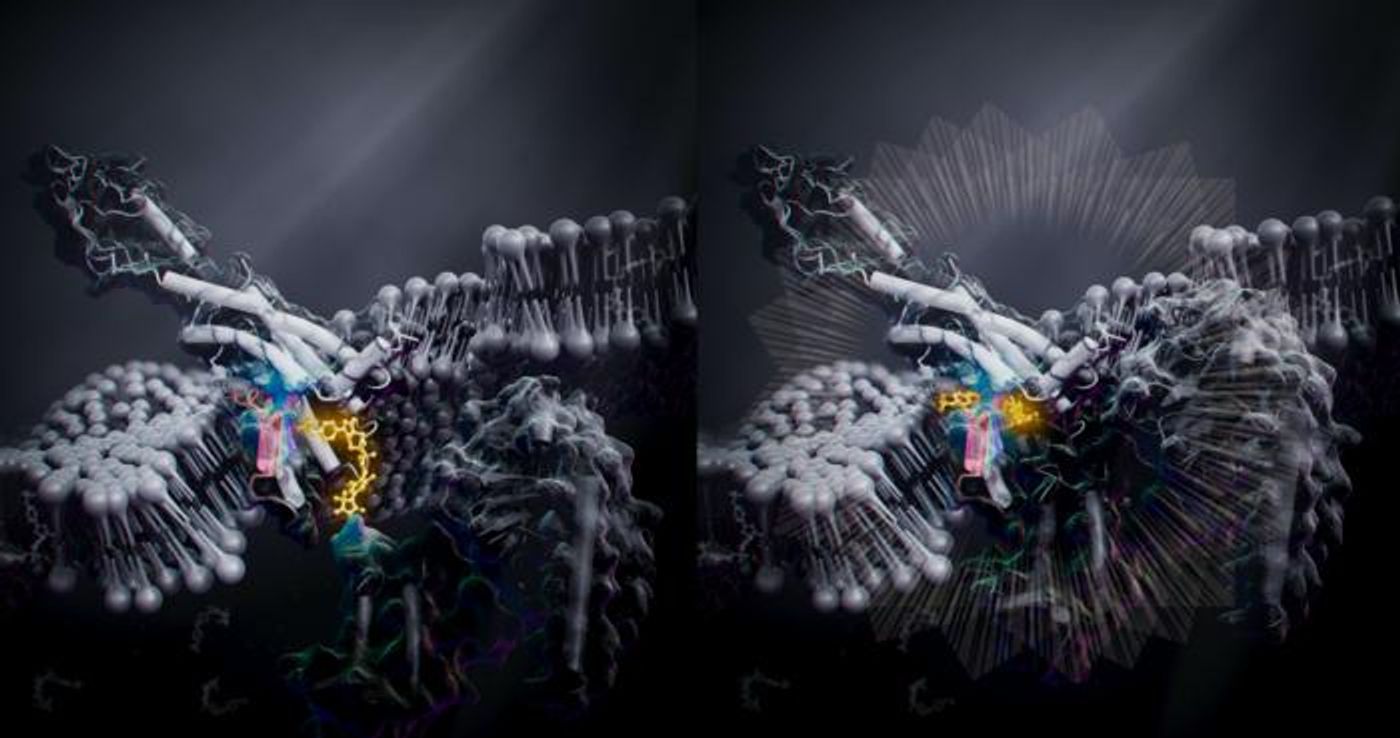A New Way to Activate GPCRs is Discovered
The signals of cells and their environments often involve molecules or ligands that bind to a receptor, which can trigger a biochemical process in a cell. G protein-coupled receptors (GPCRs) sit in the membranes of eukaryotic cells and are the biggest class of receptors in eukaryotes. There are around 800 GPCRs in the human genome. These molecules have a huge array of functions, and they are thought to be involved in many different diseases. Around one-third of drugs act by targeting a GPCR. Now scientists have discovered a new way of activating GPCRs, by causing a shape change in the part of the receptor that sits inside of the cell, the intracellular region. This work, which was reported in Nature, could help scientists design drugs that have fewer side effects, or none at all.
GPCRs have seven pieces that wind through the cell membrane, called transmembrane domains. Portions of the transmembrane domains poke out of the membrane; those on the outside of the cell are extracellular portions, and they can bind to molecules outside. When a ligand binds to a GPCR, a shape change occurs and the GPCR is activated. That activation promotes a biochemical process, enabling our bodies to function and respond to different situations.
When a drug works on a GPCR, side effects can arise if the drug works on different signaling pathways instead of only one. Another type of protein called arrestins can attach to GPCRs and halt GPCR activity. Arrestins are also a drug target. There is still a lot to learn about the links between arrestins and GPCRs, though scientists have been revealing new details.
But this latest research has suggested that if GPCRs could be activated within cells instead of through extracellular signals, drugs might be more specific. This work may be the first time scientists have found a way to trigger GPCR activity without engaging extracellular parts of GPCRs.
In this study, the researchers focused on one GPCR called human parathyroid hormone type 1 receptor (PTH1R). Study leader Osamu Nureki, a professor at the University of Tokyo, has been investigating bone physiology and osteoporosis for many years. Drugs for osteoporosis often have to be taken with a very strict dosage regimen. Nureki's team wanted to find an alternative.
With cryo-electron microscopy, the researchers revealed the 3D structure of PTH1R while bound to a ligand. A non-peptide molecule called PCO371 was engineered by the team to interact with the GPCR directly, but on the intracellular side; PCO371 can only activate the receptor after it enters the cell.
PCO371 was able to bind specifically to PTH1R, and not another molecule called beta-arrestin. Thus, the potential for side effects is drastically reduced.
This new drug could offer a new and "promising" way to treat osteoporosis, said study co-author and doctoral candidate Kazuhiro Kobayashi. The work could also open up new ways to develop drugs for issues such as pain, neurological disorder, and obesity, noted the researchers.
Sources: University of Tokyo, Nature









